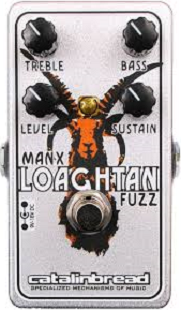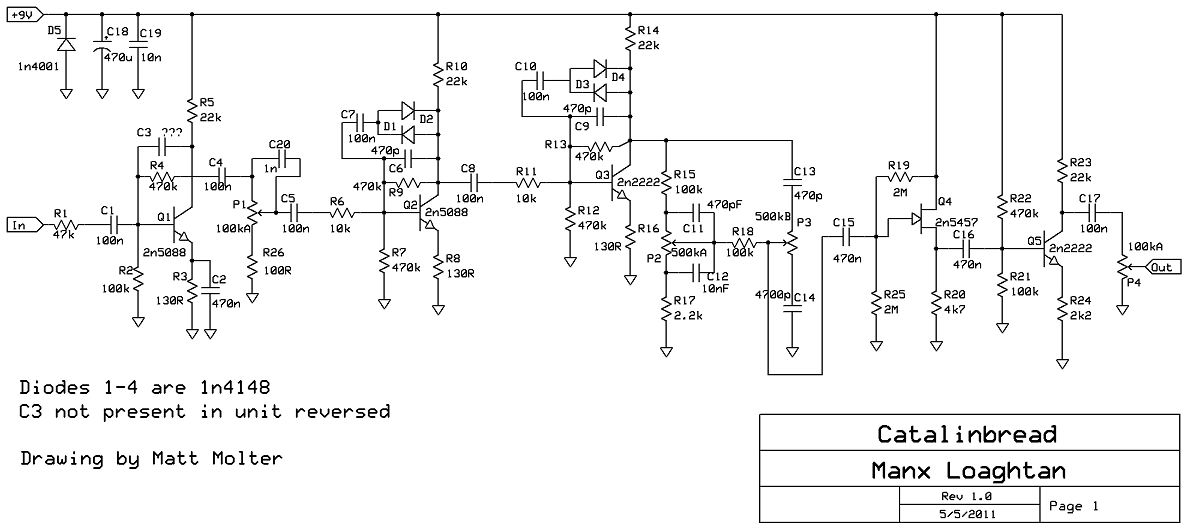Manx Loaghtan
Catalinbread Manx Loaghtan
Controls
- Knob 1 - "Treble": Adjusts the Treble frequencies of the fuzz with fully clockwise being maximum treble.
- Knob 2 - "Bass": Adjusts the Bass frequencies of the fuzz with fully clockwise being maximum bass.
- Knob 3 - "Level": Adjusts the Volume level (output) of the pedal, with fully clockwise being maximum volume.
- Knob 4 - "Sustain": Adjusts the Distortion/Fuzz of the pedal with fully clockwise being maximum distortion/fuzz.
- Footswitch 1 - "On/Off":
The Manx Loaghtan Fuzz employs what is known as a Baxandall tone stack. You can get a hump in the mids, or scooped mids based on your settings.
General Information
A Manx Loaghtan is a breed of sheep native to the Isle of Man in Great Britain. Given the "Rams Head" motif of the pedal, it would not be incorrect to conclude that the The Manx Loaghtan is an attempt at a variation of the "Rams Head" Big Muff Pi pedal from Electro Harmonix.
The tone controls are an attempt to enable greater tone variation than is otherwise usually possible with a Big Muff.
The years that the Manx Loaghtan was available from Catalinbread appear to be from 2011 to 2014. It is still not that difficult to find used examples for sale online.
Pedal Manual
None available!
Phase Inversion: No
From our examination of the schematic below, the Manx Loaghtan does not appear to invert phase on the output as compared with the signal that goes into the pedal.
| Schematic Part | Electronic Part | Action | Phase State |
|---|---|---|---|
| Q1 | 2N5088 | Inverts | Inverted |
| Q2 | 2N5088 | Inverts | Reverted |
| Q3 | 2N2222 | Inverts | Inverted |
| Q4 | 2N5457 | Does not invert | Inverted |
| Q5 | 2N2222 | Inverts | Reverted |
This will need to be borne out by testing and observation.
Schematic
From:
Artists
We are currently unaware of any artists that actively use this pedal now, or who have in the past.
- Additional Sources

